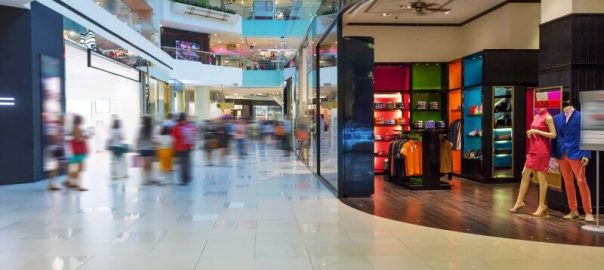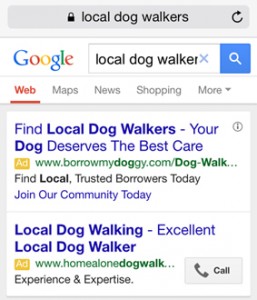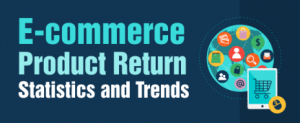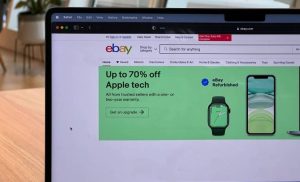Columnist James Green discusses the trends that are impacting struggling brick-and-mortar retailers and the strategies brands need to implement to survive.
 Once upon a time, brick-and-mortar malls were the center of many people’s lives. Families would go to movies, adolescents would socialize with friends, and there were lots of places to buy everything from groceries to garments. Many of the anchor stores — like Sears, Macy’s or Best Buy — served as aggregators of brand-name products.
Once upon a time, brick-and-mortar malls were the center of many people’s lives. Families would go to movies, adolescents would socialize with friends, and there were lots of places to buy everything from groceries to garments. Many of the anchor stores — like Sears, Macy’s or Best Buy — served as aggregators of brand-name products.
Things are far different for retailers today — so different, in fact, that brick-and-mortar retail is under a massive three-pronged attack:
1. People are staying home to watch entertainment
Movie attendance is down. Last September, Business Insider cited sales as flat year-over-year and expected attendance to fall by 3.5 percent, not because people are not watching entertainment — we consume tons of that — but because we consume (or binge) our entertainment at home. So it’s been very hard to get movie theaters to be the anchor tenant for a mall.
Impact on retailers: Fewer people visit malls.
2. We love our brands
Increasingly, brands have been selling directly to the consumer. Years ago, both Apple and the Disney Store pioneered this trend.
Today, more and more brands have their own stores and don’t sell through aggregators. Success in fashion retailing is Zara and Uniqlo, not Macy’s or Nordstrom. And if a fashion retailer is too small to own stores, then it sells directly to you online: American Giant is a classic example.
Brands that have successfully opened the direct-to-consumer channel have reaped benefits in sales and brand loyalty. Companies as diverse as Nike and Nestlé have called out these strategies in their investor calls. Nestlé CFO Francois-Xavier Roger touted the company’s success in direct-to-consumer by referencing an increase in e-commerce sales from 2.9 percent in 2012 to 5 percent in 2017.
The nail in the coffin of retail aggregation is the notoriously low profit margins — but margins are better on owned brands. This monumental shift in the industry has dramatically changed both the number of stores that brands maintain, as well as how brands as a whole engage with consumers.
Impact on retailers: Fewer people visit malls; stores are smaller and brand-centric as opposed to brand aggregators.
3. Convenience always wins out
Everyone wants instant gratification. If Amazon is prepared to ship something to you for free with your Amazon Prime membership — and let you watch free movies while you wait for it to be delivered — then why go to the mall?
Today, over 40 percent of all US households have Amazon Prime, and memberships are concentrated in the higher income households, which are the very people that kept malls alive.
Impact on retailers: Fewer people buying in physical locations.
The shift from physical store to e-commerce
What’s the upshot of all of this? More than 3,000 stores are expected to close this year. Many brands that seemed impervious are now imperiled. These include massive retailers such as Sears, Macy’s and Radio Shack. These closings have a direct correlation with our ability to bring in products to our homes — products that used to be bought or consumed in brick-and-mortar stores.
Recent government statistics say that online sales are only about 10 percent of total sales, but this percentage greatly underestimates the real number. For example, these numbers include gasoline sales (a product almost never sold online). The inclusion of gasoline warps categories like entertainment and clothing, where online is most prominent.
Today, the master of modern retail is clearly Amazon. But look to food delivery service Grubhub and the entire travel industry for inspiration about how to make online sales work.
It’s possible to be an aggregator, but each vertical tends to only support one or two of them. If you have Amazon in retail; Orbitz, Expedia, Priceline, Kayak in travel; and Grubhub in food delivery, how are you going to be the big winner in your category if you aggregate multiple brands?
It’s easier to focus on your own brands if you have them and let other brands worry about theirs. Take a look at this list of companies, and tell me what they have in common: Amazon, Apple, Walmart, Staples, Home Depot and Netflix. Don’t know? According to Trellis, they sit within the top 10 most successful e-commerce companies, and they all show double-digit e-commerce growth.
If you want to survive in the new world, you need to have a plan to ensure growth of online sales.
If doing business in the retail industry is uncomfortable, it’s because nearly every standard business practice around engaging customers and selling to them is being disrupted. The store model from 25 years ago doesn’t work for the showrooming of today.
Understanding how to make the shift from physical store to e-commerce is important, and once you make that shift, there are strategies and technologies that help you realize sales in what we all find ourselves in: a whole new retail world — a world where you’d better be online and you’d better be selling your own brand.
Some opinions expressed in this article may be those of a guest author and not necessarily Marketing Land. Staff authors are listed here.
Marketing Land – Internet Marketing News, Strategies & Tips
(89)
Report Post







